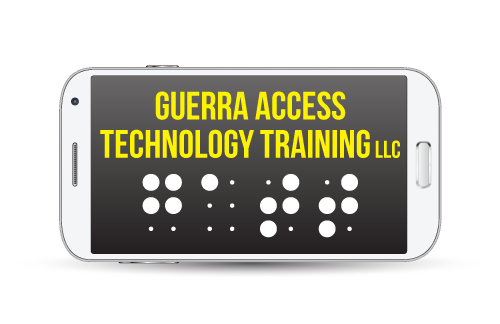Millions of people across the world use Google Docs for creating online documents. While it is widely considered an alternative to MS Word, people with disabilities might find it challenging to use, as it lacks certain key accessibility functionalities that MS Word has. With that said, you can make your Google Docs more accessible to people with disabilities by taking the following steps.
High Color Contrast
Color contrast ratio (the ratio of foreground color and background color) is one of the key factors that can impact the accessibility of your document. The ideal color contrast ratio for large text (font size 18 or larger) is 4.5:1. The ideal ratio for smaller text should be 7:1.
One should note that the above rule does not apply to text or images used as part of the decoration or other elements used purely for aesthetic purposes.
Left Aligned Text
Make sure the text in your document is left aligned. Avoid justified alignment, as the extra space between the words, can make it harder for users to read your document.
Alternative Text
Make sure you add alternative text, commonly referred to as alt text, to all the visual elements like images, charts, and graphs. The purpose of adding alt text is to provide a brief description of the visual elements in the document. Ideally, the alt text for simple visual elements like images should be limited to 120 characters. The alt text can be slightly longer for complex visual elements like graphs and charts.
One of the best ways to determine whether your alt text is descriptive enough is to read it to one of your friends without showing the visual element in question. It is a good description if they can understand the context and meaning of the visual element.
Headings
Structure your document properly by adding headings and subheadings. It’s crucial for documents that contain a large amount of text, as they can be difficult to navigate for users who rely on assistive technologies like screen readers.
Headings and subheadings can make it easier for visually challenged people to go straight to the section they need rather than going through one paragraph after another.
It’s crucial to note that headings should always be hierarchical. You should start with Heading 1, which should be followed by Heading 2, which should be followed by Heading 3, and so on. You should never skip a heading, as it can confuse those who use assistive technology to read your document.
Bulleted and Numbered Lists
Lists can make it easier for everyone – including those with disabilities – to navigate and read your document. When it comes to lists, there are two things you need to avoid.
Descriptive Hyperlink Text
Provide a descriptive display text for all the hyperlinks on your document so that people who use assistive technology can understand the context and purpose of the linked page.
For example, if you add a link to the Massachusetts Institute of Technology’s Admissions page, do not simply use the hyperlink mitadmissions.org. Instead, provide a descriptive text like MIT Admissions Page.
More importantly, do not add generic display text like ‘click here’ or ‘find out more’ to hyperlinks. The text should be descriptive so that users can decide whether they want to visit that particular webpage.
Tables
Ideally, you should avoid using tables, as Google Docs lacks the functionality to make tables accessible to those who use assistive technology. Present the information using lists or visual elements like charts or graphs.
If you must use tables, ensure they are correctly structured so that users can navigate through them using the tab button alone. Avoid the use of split cells and merged cells in tables. Above all, never use tables just for the sake of changing the visual layout of a page. Use tables only if you think it’s the best way to present a particular data set.
Create Accessible Google Documents – Final Word
When you create documents using Google Docs, you should always remember that some people collaborating with you or reading your documents might be visually challenged or have some other form of disability. Using the simple tips discussed in this guide, you can create documents that can be easily accessed and used by those who use assistive technology.
